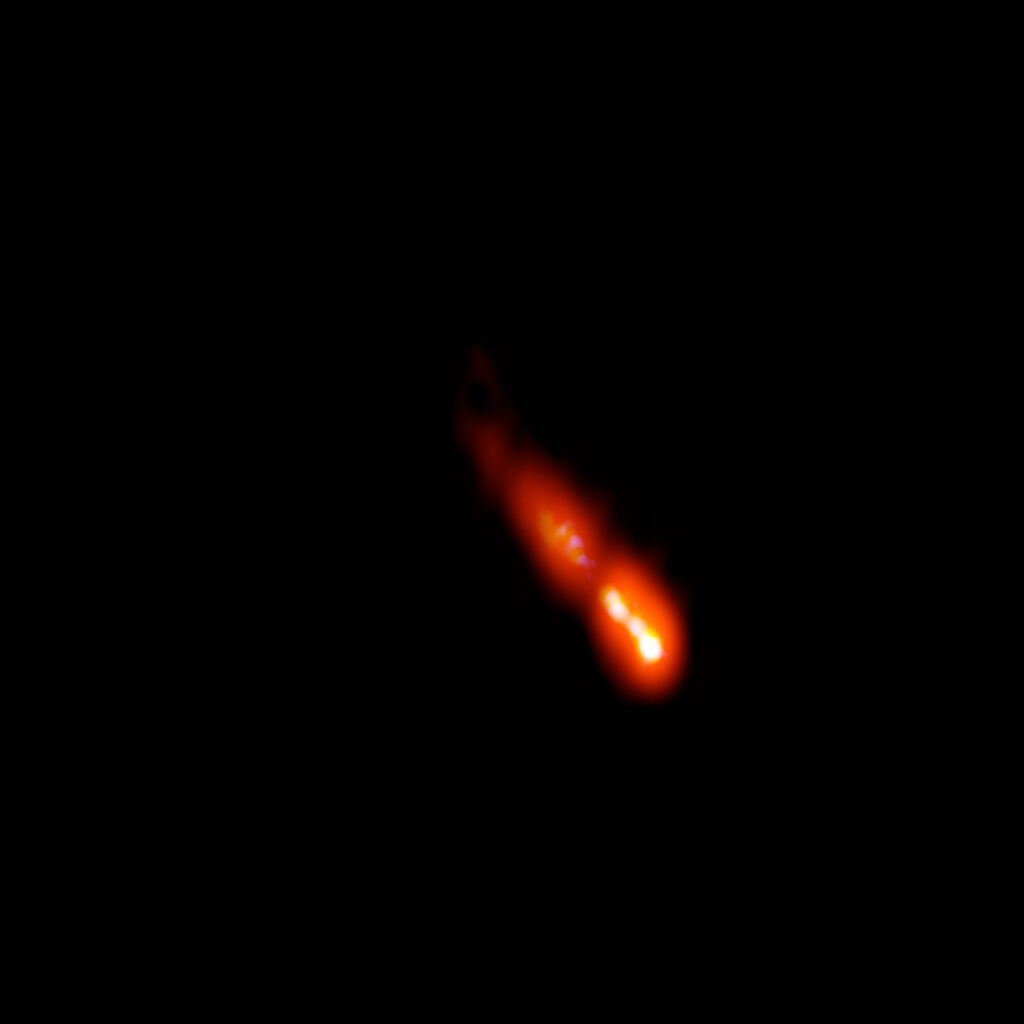A blazar is an active galactic nucleus (AGN) with a relativistic jet (a jet composed of ionized matter traveling at nearly the speed of light) directed very nearly towards the observer. Relativistic beaming of electromagnetic radiation from the jet makes blazars appear much brighter than they would be if the jet were pointed in a direction away from Earth. Blazars are powerful sources of emission across the electromagnetic spectrum (radio waves, optical light, X-rays) and are observed to be sources of high-energy gamma ray photons. Furthermore, blazars are highly variable sources, often undergoing rapid and dramatic fluctuations in brightness on short timescales (hours to days).
Despite intensive observational and theoretical efforts over several decades, the details of blazar astrophysics remain elusive. Discovered in 2019, PSO J0309+27 is located some 12.8 billion light-years away from Earth. The object is seen as it was when the Universe was less than a billion years old, or a little over 7% of its current age. It is the brightest radio-emitting blazar yet seen at such a distance. It also is the second-brightest X-ray emitting blazar at such a distance.

In new research, University of Bologna astronomer Cristiana Spingola and colleagues carried out follow-up observations of PSO J0309+27 with the Karl G. Jansky Very Large Array (VLA) and the Very Long Baseline Array (VLBA).
“In the new image, the brightest radio emission comes from the galaxy’s core, at bottom right,” the researchers said. “The jet is propelled by the gravitational energy of a supermassive black hole at the core, and moves outward, toward the upper left. The jet seen here extends some 1,600 light-years, and shows structure within it.”
The analysis of PSO J0309+27’s properties provides support for some theoretical models for why blazars are rare in the early Universe. “If PSO J0309+27 is a genuine blazar, as suggested by its X-ray properties, then we find that its bulk Lorentz factor must be relatively low,” the scientists wrote in their paper. “This value would be in favor of a scenario currently proposed to reconcile the paucity of high-redshift blazars with current predictions.”
“Nevertheless, we cannot exclude that PSO J0309+27 is seen under a larger viewing angle, which would imply that the X-ray emission must be enhanced, for example, by inverse Compton scattering with the Cosmic Microwave Background. More stringent constraints on the bulk Lorentz factor in PSO J0309+27 and on these factors in the other high-redshift blazars are necessary to test whether their properties are intrinsically different from those of the low-redshift blazar population.”
The results of this work were published in the Astronomy & Astrophysics Journal with the title: “Parsec-scale properties of the radio brightest jetted AGN at z > 6” and lead author Cristiana Spingola. Source:sci-news.com
